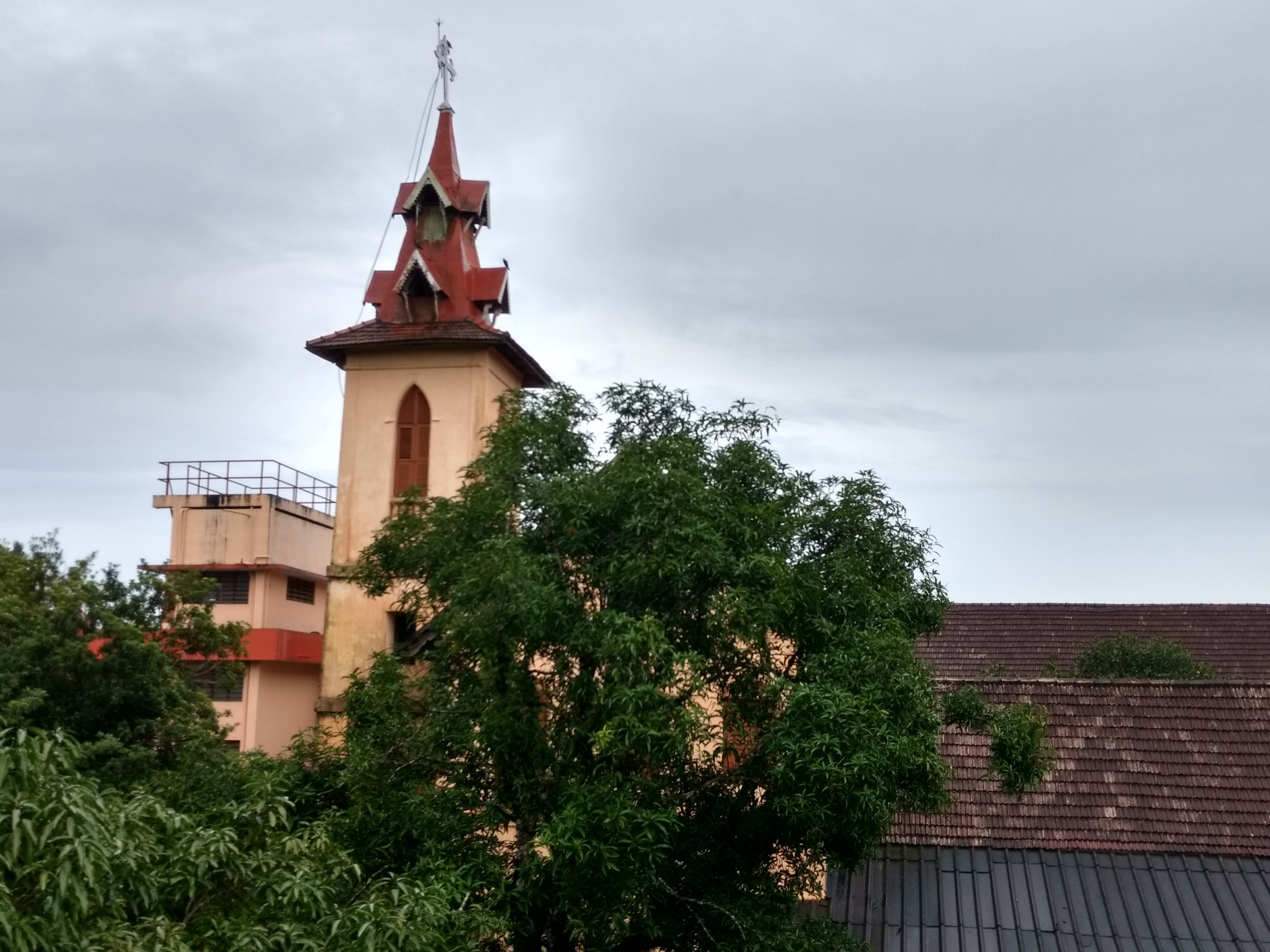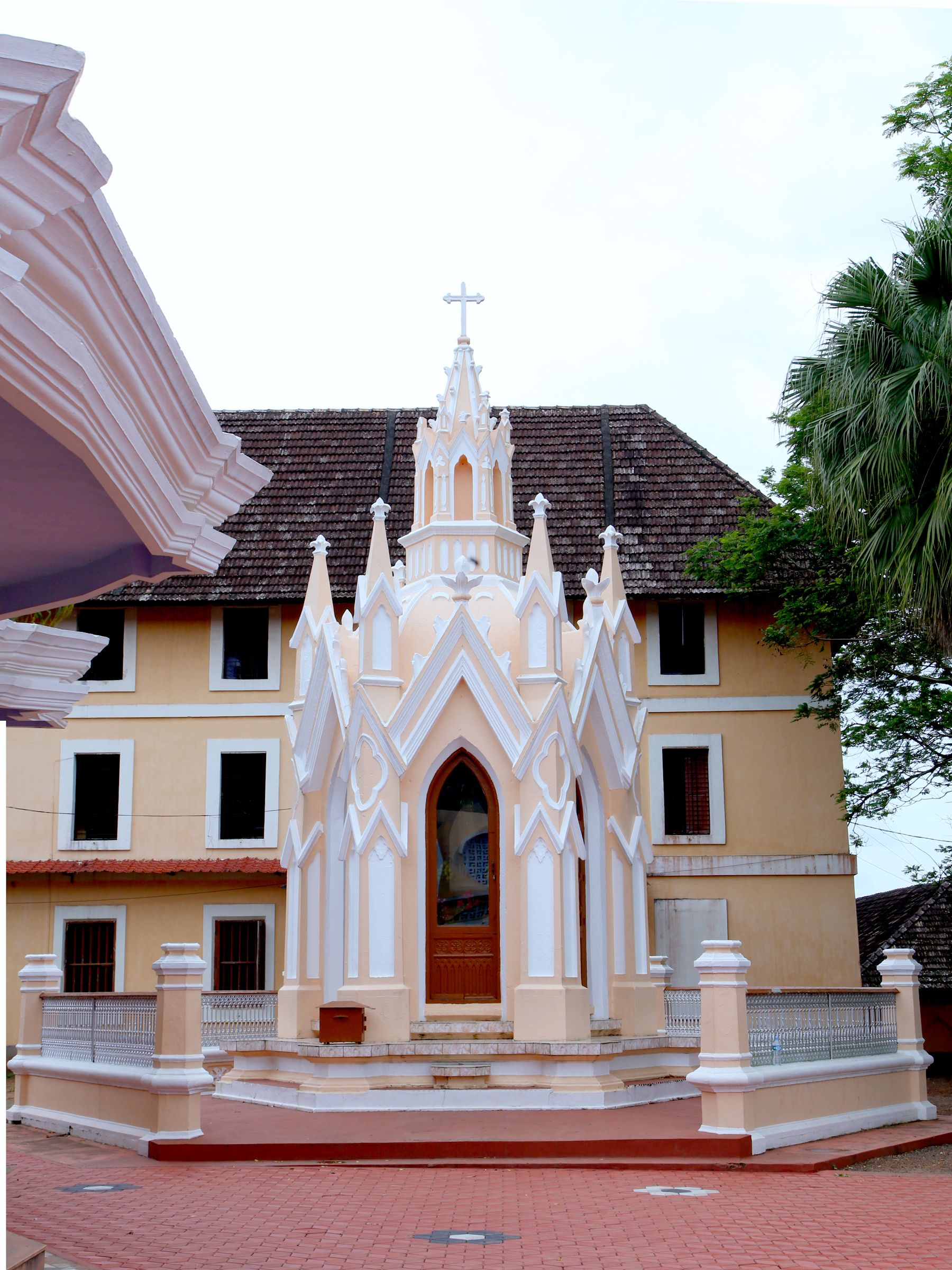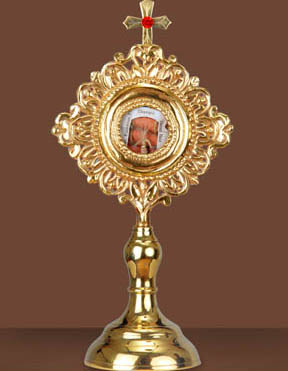The Monastery Church
Today, the most important monument in the centre of attraction on the Mannanam hill, is the Ashram Cappella which reminds us of the 15thcentury exuberant archaic architecture.
(2).jpg)
The small but beautiful and simple architecture of Church does not weaken the serene natural setting of the hill which is blessed with a lush, green tree cover. The interior decoration of the Chapel effuses an aesthetic exuberance. The tiles in the rooftop, the façade, rathal the beautiful wooden carvings, sculptures of angels, and niches of saints behind the altar render the enigma of antiquity to the Chapel. The columns in the church look extraordinary as they remind us of Barnini's columns at the St Peter's Bacilica, Rome. It is the architect’s vision, that we are thankful for, as it lures and beckons to itself, the heart of any devoted soul as it is considered as the Besrauma. The chapel was blessed in 1836 by Bishop Francis Xavier
Main Altar
The altar is decorated with gilded wood carvings of the iconostasis follow the century’s renowned flamboyant Portuguese style. The wooden statue of St Joseph, which the church dedicated to, reminds us of living spirit gracing the whole area.
.png)
The statue is a donation from Kalloorkadu church, Champakulam (Alapuzha District). This historic altar has entered in the annals of the Vatican Archives as well. His Holiness Pope Pius IX on special request, made by St Kuriakose Elias Chavara granted the altar Privilgium Altaris implying that the Holy Eucharist offered at the altar procures indulgence to the deceased.
Ettuvattom
The structure with Eight Faces is a Centre of attraction in the church. It forms the central portion of the nave of the Church.
.jpg)
In fact, St Kuriakose Elias Chavara along with ten priests took their religious vows under this structure. Reminding us of the 15th century old Churches in Europe, the Ettuvattam (Octagon), is fashioned with the icons of the patriarchs of the Old Tesament and the fathers of the Church of the first century. The mind of a devotee is naturally elevated to a pious life of these holy men.
Bell Tower
Usually , the evening solitude of this serene place is marvelled by the lofty rhythmic sweet chiming from the Bell Tower. The gigantic Bell Tower is a souvenir to this hill side.

The sigh of the Bell Tower is viewed from far and wide especially from the luxuriant green scenic bank of Vembanad backwaters. The 100 feet tall Bell Tower carries three bells named after St. Joseph, St. Thomas and St Kuriakose, the martyr and during the chiming of the bell, it does seem likean ode and a prayer from them for the heavens.
Marian Chapel

The Marian Chapel is a regulary visited place by the pilgrims.It is known for its historicity. It was built in the same place of chapel made by the Founding Fathers. The statue of Blessed Virgin Mary speaks about its historicity as it was installed as a jublee memorial of religious profession of 11 Fathers on 8 December, 1905. It was Fr Esthapanos CMI (Stephan) who brought this statue as one of the three statues brought fromFrance. Other two sculptures are found in Parel church in Changanssery and in Jubilee Chapel in Palai, Kottayam District.
The Tomb of St Kuriakose Elias Chavara
As the pinnacle of pilgrimage, the tomb of St Chavara adds serenity and holiness to this place.
The tomb is placed adjacent to the main altar. At the age of 66, St Kuriakose Elias Chavara was called to his eternal reward after an eventful holy lifr on 3rd January , 1871, and was buried in St Philomena’s Monastery, Koonammavu. The general chapter of CMI Congregation wanted the holy remains to be moved to St. Joseph’s Monastery Church Mannanam.With the permission of Vicar General of Verappuzha, Rev. Fr Philiposus Padre, the relics were placed in a bronze box along with written documents and were interred in the Church on 24 may, 1889. It is very edifying to see that people come in groups and typically lay their heads on the tomb and get relieved from their agonizing worries. Several people, because of their arduous life, turn quite emotional here and look forward to finding solace in the peaceful environment. We often say that miracles and signs from the Holy Beloved are a normal practice in this place.
The Lead Plate
The lead Plate with the inscriptions of the short biography of the saint Chavara was placed along with the relics by the second Prior General of the CMI Congregation, very Rev Fr Kuriakose Elias Porukara with his signature.


The plate was found when the tomb was exhumed and is now kept in the Chavara art gallery and museum.
A Lock of Hair

Rev Fr Varkey Muttathupadathu a disciple of St Kuriakose Elias Chavara collected and kept a lock of hair of the saint with him, saying,” in order to ensure its presence when God permits to venerate it as holy relic, I keep it safe”. He kept it in a small box. Rev Fr Varkey handed over the relic to his nephew Rev Fr Ouseph Muttathupadathu later on. When St Alphonsa was on sick bed at the novitiate she prayed with this lock of hair and was miraculously healed. The relic was handed over to Mannanam Ashram in 1937.